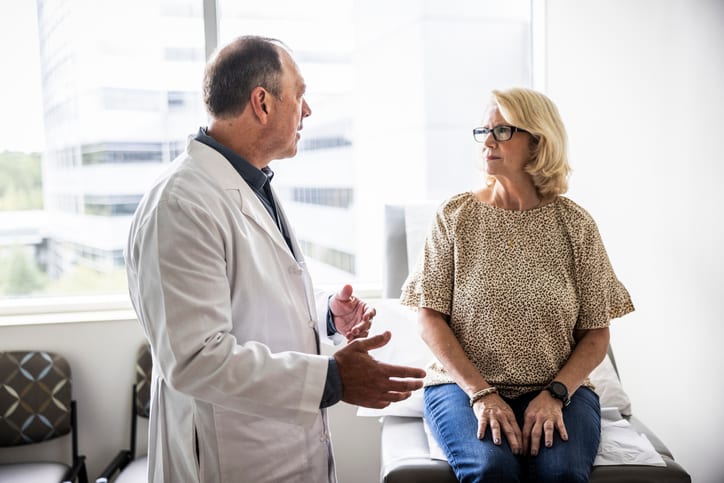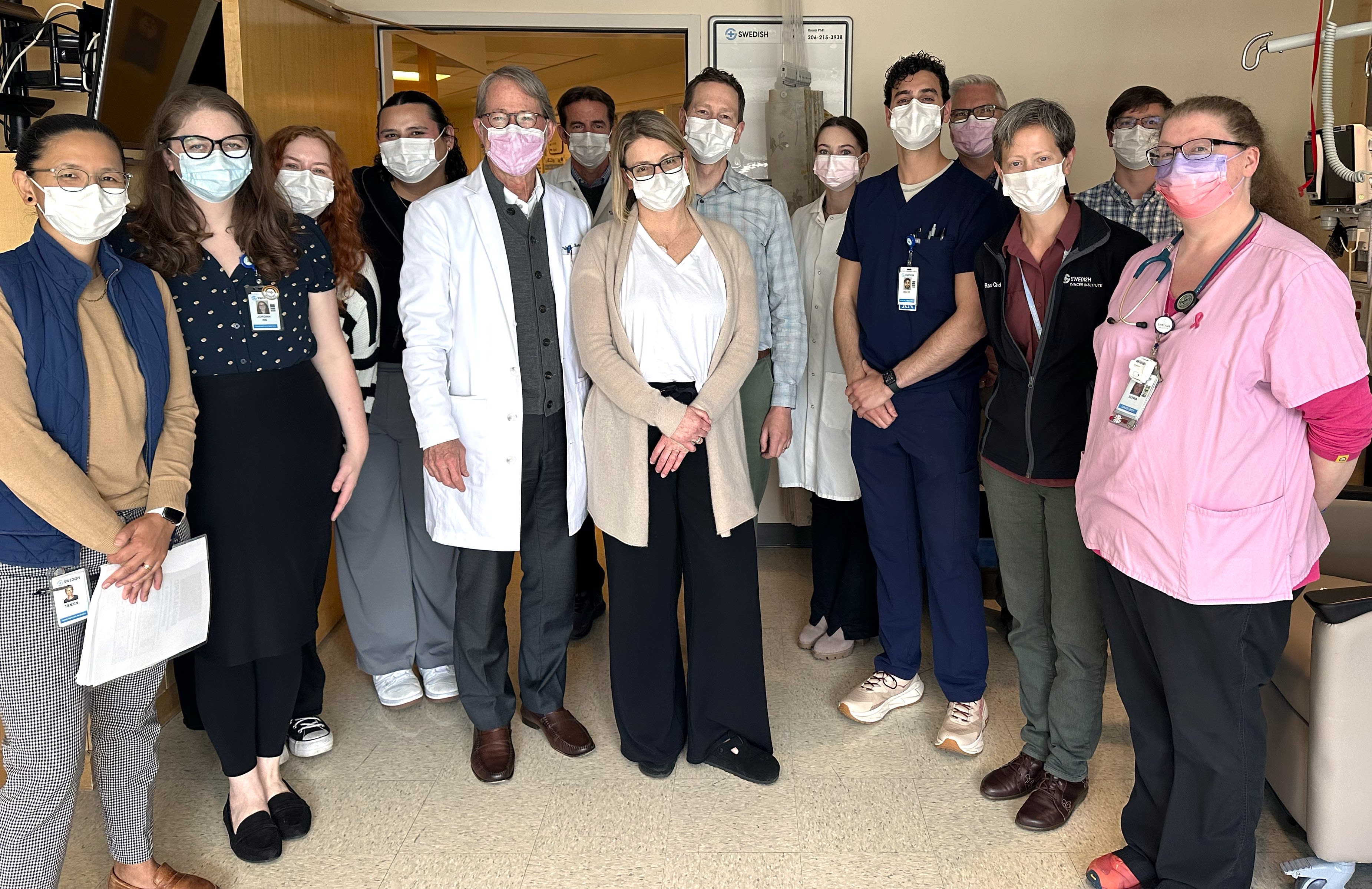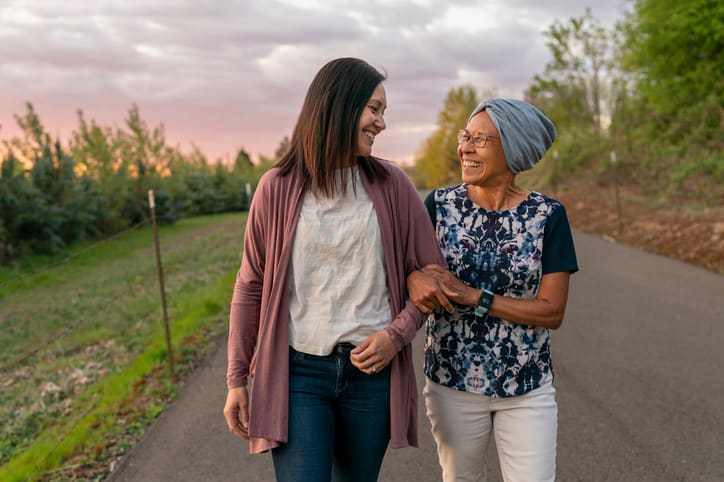Is it time for a colonoscopy? A Swedish expert offers guidance.
[5 min read]
In this article:
-
Watch the short video below. A Swedish colon and rectal surgeon discusses the causes of colon and rectal cancer, as well as risk, prevention and the importance of screenings.
-
Swedish is home to the largest colon and rectal clinic in the Pacific Northwest.
-
Current guidelines for screening begin at age 45, but if you have a family history it's recommend that you begin your screenings at 10 years younger than the age of your youngest family member when they were diagnosed.
-
Colorectal screenings, including colonoscopy, stool blood tests and ColoGard, save lives.
Is it time for a colonoscopy?
March is Colorectal Cancer Awareness Month – a good time to refresh on how to protect yourself from this deadly disease. Colorectal cancer is the No. 2 cause of cancer-related deaths in the United States. But it’s also one of the most preventable cancers.
What is colorectal cancer
Colorectal cancer starts in the colon and rectum, which are part of the large intestine. Typically, a small, noncancerous group of cells (called a polyp) forms in the lining of the rectum or colon. Some polyps are harmless, but others grow out of control and become colorectal cancer.
Removing any polyps in the colon or rectum as soon as possible is best. If they stay there, they may become cancerous, grow and spread to other organs, including the liver.
Watch video: Lindsay Sceats, M.D., a colorectal surgeon at Swedish, on a recent edition of KING 5's New Day Northwest. Dr. Sceats joined host Amity Addrisi for a discussion about the diagnosis, treatment and prevention of colon and rectal cancers, the importance of screening, and some myths about colonoscopies, a procedure that may make you squeamish, but could save your life.
Treating colorectal cancer
When a person is diagnosed with colorectal cancer, the most common treatment is surgery to try to remove the cancer. How and if surgery happens depends on the stage of the cancer, the size of the tumor and where it’s located, and if the patient can have surgery.
Cancerous polyps that haven’t spread yet usually can be surgically removed with a colonoscope – the long, flexible tube and camera that’s used during a colonoscopy. This procedure is called a polypectomy. More advanced cancers may require more advanced surgeries and treatments. Some patients need chemotherapy before or after surgery and possibly radiation.
Colorectal cancer treatments by cancer stage
Preventing colorectal cancer
Colorectal cancer can be devastating. But the good news is that most cases are preventable. The best prevention for colorectal cancer is regular colorectal screenings. There are several screening options, including fecal occult blood tests, stool DNA tests and colonoscopies. Colonoscopy is considered the gold standard of colorectal screening tools.
With a colonoscopy, doctors can find polyps early and remove them – before they become cancer. Treatments for colorectal cancer are most effective when the cancer is caught early. And a colonoscopy helps find problems at the earliest stage possible.
When to get a colonoscopy
In the past, the recommendation was to start having colonoscopies at age 50. Recently, more younger people have been getting colorectal cancer, so the American Cancer Society now says to get your first colonoscopy at age 45, and then every 10 years until you’re at least 75, unless you have other risk factors.
The best place to start is to talk to your provider about your risk of colorectal cancer. Your provider may suggest that you start getting coloscopies at a younger age or more frequently if you have certain risk factors for colorectal cancer. Examples include:
- Having a family or personal history of colorectal cancer or polyps.
- Having inflammatory bowel disease (IBS).
- Having genetic syndromes, such as Lynch syndrome or familial adenomatous polyposis (FAP).
- Being overweight or obese.
- Eating a lot of red meat.
- Smoking or drinking a lot of alcohol.
But isn’t getting a colonoscopy…terrible?
You may have heard stories from relatives or friends about getting a colonoscopy. Maybe their comments have made you delay getting screened. A colonoscopy may not be fun, but for most people the procedure is pretty routine. And it’s worth reducing your risk of colorectal cancer by up to 70%.
Still, we know that rumors and myths can keep you from your screening. Let’s talk about it.
What people say: “I don’t need to have a colonoscopy if I don’t have any symptoms.”
The truth: A colonoscopy is all about prevention. By the time you have symptoms of colorectal cancer, the cancer has been in your body for a while and may limit effective treatment options. The goal of regular screening is to prevent the cancer altogether, so when you get a colonoscopy, you probably won’t have any symptoms.
If you have one or more of these symptoms, you should talk to your provider right away:
- Bleeding from the rectum
- Pain when using the bathroom
- Weight loss (without trying)
- New constipation or bowel habits
What people say: “The prep is the worst and makes you gag.”
The truth: We won’t lie. Preparing for a colonoscopy isn’t the most enjoyable activity. But most people also agree that’s it not the worst thing in the world. These steps are usually part of “the prep”:
1. You’ll get a prescription laxative (“prep”) with instructions a few days before your colonoscopy. The prep is usually a liquid provided in two containers. It helps your body get rid of waste, so your provider can clearly look at the inside of your colon and rectum during the colonoscopy.
2. For the full day before your colonoscopy, you’ll eat soft foods only – such as broth, Jell-O or popsicles.
3. You’ll drink part of the prep in the evening, usually at around 6 p.m. You don’t have to chug the prep, and you can mix it with clear liquids like ginger ale or Gatorade if you prefer.
4. You may have to wake up really early to finish the rest of the prep. You must finish it four hours before your colonoscopy, which will probably be scheduled in the morning.
What people say: “The colonoscopy hurts.”
The truth: Most people get a colonoscopy with conscious sedation. This means you feel like you’re asleep, but you don’t get general anesthesia from an anesthesiologist (unless it’s a special case). The procedure shouldn’t hurt. Some people report feeling some cramping and minor discomfort.
The procedure itself takes about 30 minutes. When you wake up, you have some time to recover. After that, you’re free to go home as long as you have someone to drive you.
--
Learn more and find a practitioner
If you or someone you love has questions about colon cancer or diagnosis, treatment or care the experts at Swedish Cancer Institute can help. We can accommodate both in-person and virtual visits. we offer expert treatment of conditions that affect the colon and rectum. Swedish's Colon & Rectal Clinic is the largest in the Pacific Northwest and for more than 30 years, our experts at have been helping people from across the region experience better digestive health. Visit our website to learn about our services and locations.
Whether you require an in-person visit or want to consult a doctor virtually, you have options. Contact Swedish Primary Care to schedule an appointment with a primary care practitioner. You can also connect virtually with your doctor to review your symptoms, provide instruction and follow up as needed. And with Swedish ExpressCare Virtual you can receive treatment in minutes for common conditions such as colds, flu, urinary tract infections, and more. You can also use our provider directory to find a specialist or primary care physician near you.
Additional resources
At Swedish, a visionary initiative to advance the early detection of cancer
This information is not intended as a substitute for professional medical care. Always follow your health care professional's instructions.




